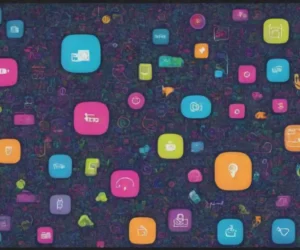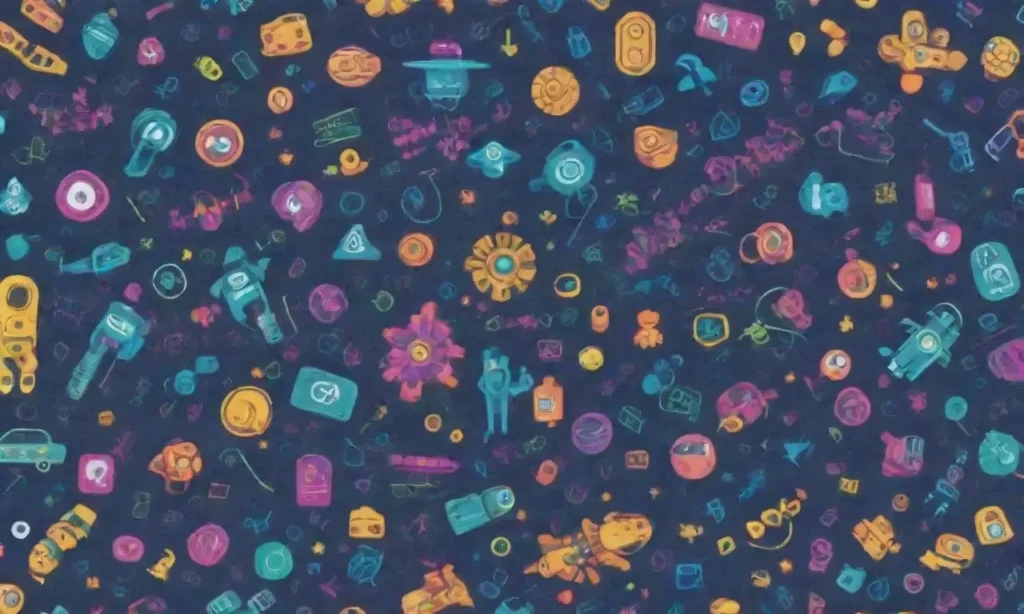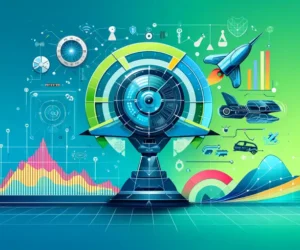
Exploring Transfer Learning Applications in Game Development Models

Introduction
In recent years, the field of artificial intelligence (AI) has made remarkable strides, owing much of this progress to developments in machine learning techniques. Among these techniques, transfer learning has emerged as a particularly powerful approach, especially in domains where data may be scarce or expensive to collect. Transfer learning, in a nutshell, involves taking a pre-trained model—normally trained on one task—and fine-tuning it on a different but related task. This method not only reduces the time and computational power required for training models from scratch but also provides state-of-the-art performance in various applications. In the realm of game development, transfer learning is proving to be an invaluable asset that can facilitate various tasks such as content generation, NPC (non-player character) behavior, and environment design.
In this article, we will delve deep into the applications of transfer learning in game development. We will explore how this innovative approach is significantly enhancing the gaming experience, facilitating smarter game AI, automating repetitive tasks, and even creating more engaging narratives and graphics. By showcasing specific examples and case studies, we aim to illustrate the profound impact that transfer learning can have on game design and development. Furthermore, we'll discuss the challenges that come with implementing transfer learning in game development and highlight potential future directions for research and development in this exciting intersection of AI and gaming.
Understanding Transfer Learning
The Basics of Transfer Learning
At its core, transfer learning leverages knowledge gained while solving one problem and applies that knowledge to a different, but related, problem. Traditional AI models often require extensive datasets for effective training, which may not always be available, especially in specialized arenas like game development. Transfer learning overcomes this limitation by allowing developers to utilize pre-existing models trained on large datasets to reduce the data and time needed for subsequent tasks. The transfer typically involves either feature extraction, where one uses the learned representations from a model, or fine-tuning, where one adapts a pre-trained model on new data.
In the context of game development, transfer learning can be particularly advantageous. For instance, if a model has been trained on generic images, this pre-trained knowledge can then be fine-tuned to identify specific elements in game environments, such as character models or item placements. This ability to adapt and specialize models accelerates the development process, significantly reducing the time needed to create and optimize game mechanics.
Game Development in the Age of AI: Future Directions and TrendsThe Importance of Data in Game Development
Data is the lifeblood of any AI model, and in the world of game development, acquiring that data can be a formidable challenge. Unlike traditional domains where data is readily available, game development often relies on proprietary assets. Additionally, the diversity and richness of the gameplay experience make it difficult to source comprehensive datasets. In this scenario, transfer learning emerges as a solution that mitigates these challenges. By utilizing pre-existing models trained on diverse datasets, developers can bypass the long and arduous process of data collection, accelerating development and enhancing the game’s design.
For example, if a game studio wants to develop an AI that can recognize player behaviors and predict their future actions during gameplay, it may not have sufficient data specific to its title. However, by employing a model trained on player interactions across various games, developers can fine-tune it to their unique environment, enriching the gameplay experience in a fraction of the time it would take to create a model from scratch. Consequently, this leads to higher-quality products reaching the market faster.
Types of Transfer Learning in Game Development
Transfer learning can be classified into several categories, with two primary types being inductive and transductive transfer learning. Inductive transfer learning involves learning a new task using labeled data and typically involves fine-tuning a model. On the other hand, transductive transfer learning focuses on using unlabeled data from the target domain along with labeled data from the source domain.
In the context of game development, we often see inductive transfer learning applied to NPC behavior modeling. By taking a model trained on interactions from previous games, developers can fine-tune the model to make NPCs react more naturally in a new game environment. Conversely, transductive transfer learning may be leveraged in scenarios where developers want AI to adapt to players' behaviors during a live game, utilizing the gameplay data to improve the NPCs' reactions in real time.
Influence of Reinforcement Learning on Game Balancing TechniquesApplications of Transfer Learning in Game Development
Enhanced NPC Behavior
One of the most significant applications of transfer learning in game development is in the realm of non-player character (NPC) behavior. NPCs are crucial for creating immersive and rewarding gaming experiences, yet scripting their behaviors can be time-consuming and complex. Traditional rule-based approaches often lead to predictable and uninspired interactions. By employing transfer learning methods, game developers can create smarter and more lifelike NPCs that adapt to player actions and behaviors.
For instance, imagine an open-world game where the NPCs are designed to mimic human-like responses based on player interactions. Developers can utilize a transfer learning model trained on extensive datasets of human behavior and dialogue interactions. Fine-tuning this model with specific gameplay data allows NPCs to exhibit more dynamic responses. As players interact with them, the NPCs can adjust their behavior, learn from their experiences, and react differently based on the nature of prior encounters. This ultimately elevates the player’s experience, making the game more engaging and enjoyable.
Content Generation and Procedural Generation
Another compelling application of transfer learning lies in the realm of content generation—a method wherein game developers can automate the creation of game assets, levels, and even narratives. Utilizing transfer learning, AI can efficiently generate intricate environments or dialogues that enhance the gameplay experience.
For instance, transfer learning has been effectively applied to procedural generation, which is particularly useful in genres like rogue-likes or open-world games. Here, models can be trained on specific forms of environments and then transferred to create diverse game worlds that maintain coherence and aesthetic value. Developers can input parameters for what they desire in a level design, and the model, leveraging knowledge from its training, starts generating maps, dungeons, or even towns that align with those requirements while providing varied gameplay opportunities.
Integrating Computer Vision in Game Mechanics Through Machine LearningAdditionally, in narrative design, transfer learning allows models to generate dynamic storylines or dialogues based on players' choices. A model trained on a broad corpus of existing narratives can be fine-tuned to develop engaging story arcs tailored to specific player decisions, creating a personalized experience that can elevate storytelling in games to new heights.
Game Testing and Quality Assurance
Quality assurance is a critical aspect of game development, and transfer learning plays a vital role in automating parts of this process. Game testing often requires extensive manual effort, with testers needing to go through various scenarios and interactions to identify bugs and inconsistencies. This can be monotonous and time-intensive.
By employing transfer learning, developers can create models that predict bugs and errors based on previously observed patterns. A pre-trained model can be fine-tuned to recognize specific elements of the game environment and identify probable pitfalls before the game even reaches testing. This proactive approach to identifying issues can save both time and resources, enhancing the overall quality of the game.
Additionally, transfer learning can facilitate gameplay testing by simulating player behavior. In this scenario, models trained on player interactions can simulate thousands of game runs, exploring diverse outcomes and edge cases that may not be immediately apparent through manual testing.
Creating Dynamic Difficulty Adjustment Systems with Machine LearningChallenges of Implementing Transfer Learning

Data Limitations and Quality
While transfer learning offers promising benefits to game development, its effectiveness often hinges on the quality and quantity of the data used during the training phase. Not all datasets are created equal, and a model trained on suboptimal or biased data may develop erroneous assumptions or behaviors. In terms of game development, if the initial model is trained on data that does not accurately represent the intricacies of your game environment, it can lead to poor performance.
Moreover, the uniqueness of each game necessitates careful consideration when selecting pre-trained models. Developers must ensure that the foundational model has similarities to their specific tasks, as differences can diminish the advantages of transfer learning. It may require significant resources and expertise to effectively navigate this landscape, often underscoring the importance of thorough experimentation and validation.
Computational Resources and Expertise
Another challenge is the requirement for sufficient computational resources and expertise. While transfer learning significantly reduces the time needed to train models, it does not entirely eliminate the need for robust computational setups. Fine-tuning can still be resource-intensive, especially for complex models. Small indie studios may find themselves constrained by budget and hardware limitations, hindered in their ability to fully utilize transfer learning.
Additionally, effective transfer learning necessitates a degree of expertise in machine learning and understanding of model architectures. Developers must be familiar with data preparation, model selection, and validation techniques to exploit this technology successfully. This need for specialized knowledge may create a barrier to entry for smaller development teams looking to leverage AI-driven solutions.
Integration with Existing Systems
Integrating transfer learning methodologies into existing game engines and frameworks can be a convoluted process. Game developers often utilize various tools, engines, and platforms, each with its own requirements and capabilities. Aligning transfer learning models with existing systems can present challenges related to software compatibility, data formats, and performance metrics.
Moreover, maintaining the flexibility and adaptability of AI models within a dynamic game environment is essential for ensuring that developers can successfully tweak and modify gameplay elements as needed. A rigid or poorly integrated system may cause more problems than it solves, necessitating careful planning, architecture, and ongoing support for any transfer learning solutions employed.
Conclusion
Transfer learning is rapidly emerging as a transformative force in the landscape of game development, offering exciting opportunities to enhance not only NPC behavior and content generation but also quality assurance and testing processes. By leveraging pre-trained models and fine-tuning them for specific tasks, game designers can save time and resources while producing high-quality, immersive experiences.
However, it is crucial for developers to carefully consider the challenges associated with transfer learning. Ensuring high data quality, securing necessary computational resources, and effectively integrating AI methodologies into existing workflows are all vital steps toward harnessing the full potential of this cutting-edge technology.
As we look to the future, the continued evolution of transfer learning will undoubtedly open new avenues for innovation in game development. Emerging research, coupled with advancements in computing power and AI methodology, promises a synergistic future where games become more responsive, engaging, and customized than ever before. The gaming landscape is changing, and with transfer learning at the forefront, developers have the opportunity to redefine what is possible in interactive entertainment.
If you want to read more articles similar to Exploring Transfer Learning Applications in Game Development Models, you can visit the Game Development category.



You Must Read